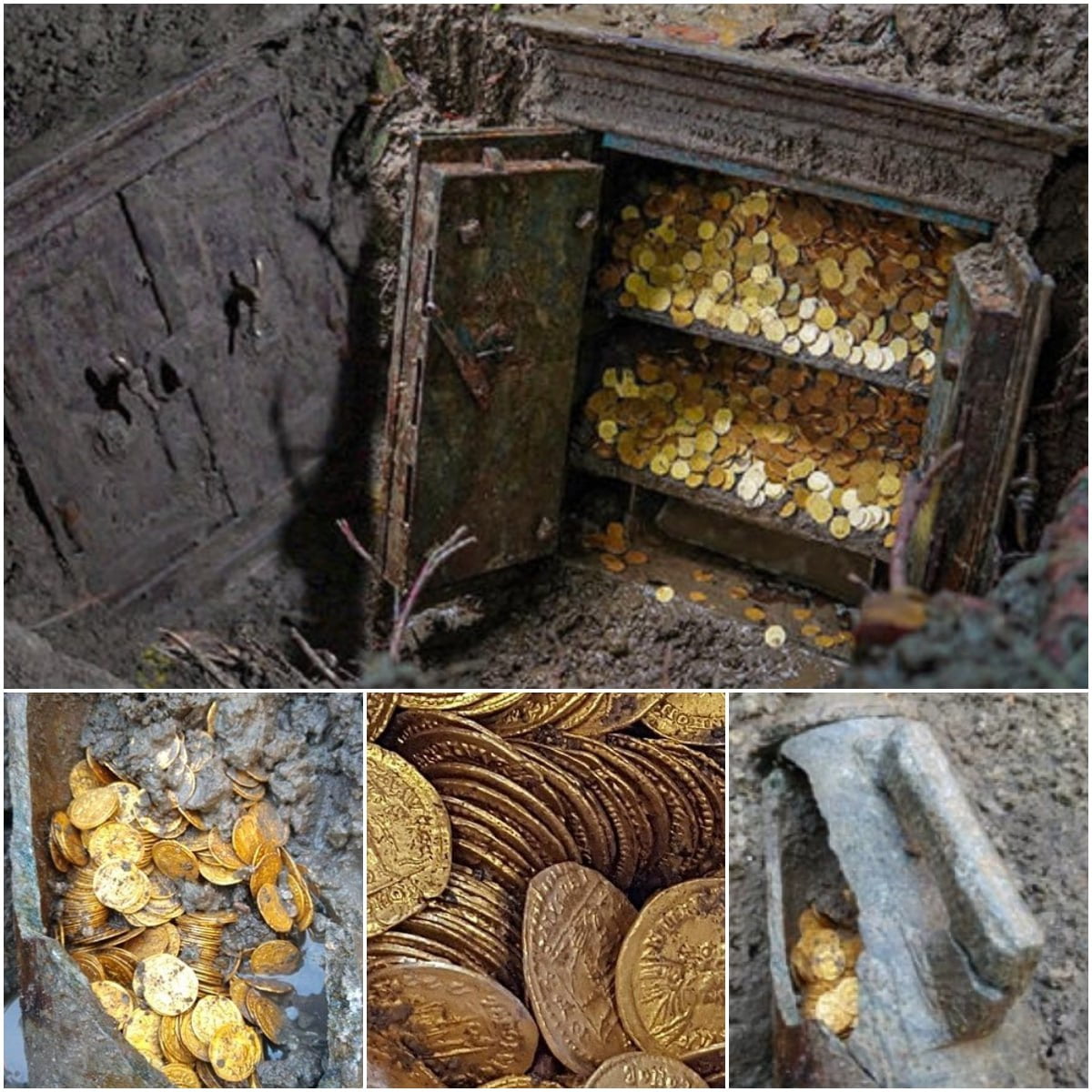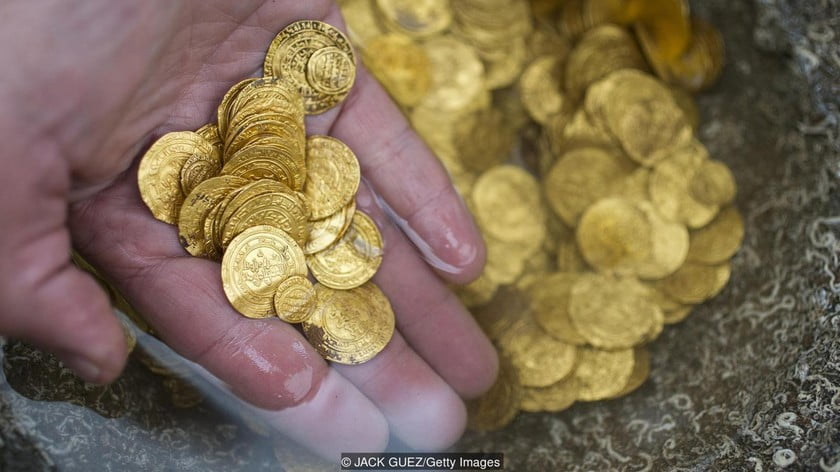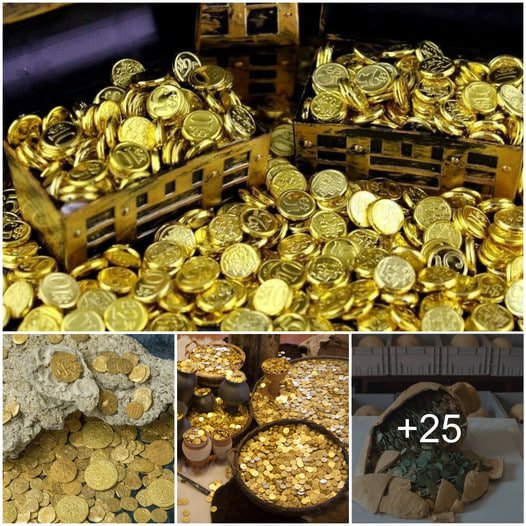
This discovery is among the biggest treasures ever found along the shores of Israel.
One gloomy morning in February 2015, Mr. Zvika Fayer, a passionate scuba diver, along with his buddies, decided to explore the sea off the coast of Caesarea, Israel. To their amazement, they stumbled upon a glint of gold coins hidden beneath the sandy seabed.
Before the discovery of this treasure trove, a powerful winter storm had swept through Caesarea, altering the underwater terrain. This change caused Mr. Zvika Fayer and his friends to catch a glimpse of the shimmering gold coins during their scuba diving adventure. Initially, they assumed the coins were fake, so they only pocketed a few to inspect later. To their astonishment, the coins turned out to be genuine gold. “I couldn’t believe my eyes when I found these gold coins,” expressed Mr. Zvika Fayer.
Israel boasts numerous underwater archaeological sites, and the government encourages amateur divers to explore and learn about these submerged relics. Caesarea, a beloved diving spot for Mr. Zvika Fayer, is rich in history and marine life. Having dived here countless times before, Mr. Zvika Fayer always delights in encountering large fish, ancient artifacts, pottery, and other treasures scattered across the ocean floor.

Typically, when someone discovers a treasure, they would want to keep it for themselves, but Zuika Fayer did things differently. Instead of keeping the treasure he found, Fayer promptly returned to his boat and contacted the Israeli Antiquities Authority (IAA) to inform them of his discovery. The IAA then decided to conduct further investigations in the area where the gold coins were located to learn more about the origins of this underwater treasure.
Fayer then collaborated with the IAA, spending days diving under the sea and collecting over 2,000 gold coins. These coins, all 24 karats with a purity of up to 95%, have been sitting undisturbed in the Mediterranean Sea for around a thousand years. They are of significant value to archaeologists and historians, shedding light on a forgotten or poorly understood historical period.
Israeli archaeologists consider this find to be invaluable both physically and mentally. The gold coins now belong to the state, becoming national property. The divers who made the discovery receive credit, but they do not receive any material benefits from finding the treasure.
Robert Kool, an expert on antiquity with the Israel Antiquities Authority, confirmed that the ancient coins were so well-preserved because they were undisturbed on the seabed of Israel for centuries. It is believed that they may have been lost from shipwrecks near Caesarea, an ancient Roman port in the Eastern Mediterranean. Despite their age, the coins are remarkably clean and well-preserved.

Deteriorating ancient Roman ruins in Caesarea are a stark reminder of its bustling trading history. Located along the Mediterranean coast between Tel Aviv and Haifa, Caesarea is now renowned for its archaeological sites dating back to Roman times. The discovery of gold coins from the Muslim rule era has shed light on the city’s past. According to Koby Sharvit, director of the IAA, these coins were minted during the reigns of Caliphs al-Hakim and al-Zahir, showcasing a unified currency system across regions like Cairo and Palermo.
Speculations suggest that the 2,000 gold coins found could have been lost due to a shipwreck or pirate attack. Since the excavation, researchers like Fayer have collaborated with the IAA to uncover more treasures along the Mediterranean coast. Their exploration has extended to cities like Netanya, tracing the ancient trade routes of Phoenician and Roman ships. For Fayer, the sea holds a fascination with its hidden cultural relics waiting to be discovered.

Ruins from ancient Rome in Caesarea are currently in poor condition. Not only are there many famous works from ancient times under the sea, but there are also visible remains in Caesarea. The city was first established in the 4th century BC as a bustling trading post. It was ruled by the Egyptian queen Cleopatra in 96 BC before being conquered by the Romans. The city, renamed Straton’s Tower, was then handed over to King Herod the Great, who rebuilt it as a port city in honor of the Roman Emperor Caesar Augustus.
Under King Herod’s reign, Caesarea thrived as a maritime city. He constructed walls to create a massive seaport and aqueducts to sustain over 100,000 residents. The city also featured a horse racing arena with wooden steps, corridors, and a square with 3,500 seats. Adjacent to the arena were temples, markets, public saunas, and a domed theater for up to 20,000 spectators to witness horse races and gladiator battles.
In 6 AD, Caesarea became the capital of Rome in Judea, where prominent Roman governors like Pontius Pilate resided during Jesus’ time. Despite the destruction of Jerusalem during the Jewish rebellion between AD 66-70, Caesarea remained the political and economic hub of the region.

